
| Publisher: | Houghton Mifflin Harcourt | |
| Genre: | General, Fiction, Historical, Literary | |
| ISBN: | 9780151014675 | |
| Pub Date: | September 2012 | |
| Price: | $26 |
| Fiction |
by Clare Clark
Clare Clark's Beautiful Lies was inspired by the real-life story of Gabriela Cunninghame Graham, wife of the aristocratic writer and parliamentarian Robert Cunninghame Graham, well known in the 1880s for his socialist politics. Clark sets her novel in 1887, the year of Queen Victoria's Golden Jubilee, but not everyone is celebrating--unemployment and homelessness lead to widespread riots. Parallels between 19th-century Britain and today's world are easily drawn, but never in a preachy or obvious way.
Maribel Campbell Lowe has fashioned an exotic personal history out of whole cloth. The truth is much more prosaic and, if discovered, potentially disastrous for her husband, Edward, and his family. She is already a bit of a scandal: a childless, chain-smoking photographer who does as she pleases.
In another modern touch, Beautiful Lies also outlines the beginnings of newspaper corruption and tabloid journalism, as Maribel runs afoul of Alfred Webster, a self-righteous newspaper editor who pretends to be Edward's friend but is in reality his nemesis. It is possible he knows the truth about Maribel's past and might use it against her and Edward, but Maribel is not without her resources in that department.
Edward, meanwhile, is ousted from the House of Commons for taking part in a demonstration and sent to jail. While he is serving his sentence, Maribel goes to Spain to look for a mine that will end their financial problems, another of the subplots Clark uses so well to flesh out the social landscape, mores and morals of her late 19th-century setting. --Valerie Ryan, Cannon Beach Book Company, Ore.

| Publisher: | Vintage | |
| Genre: | Fiction, Literary | |
| ISBN: | 9780307745484 | |
| Pub Date: | September 2012 | |
| Price: | $15 |
| Starred | Fiction |
by Irène Némirovsky, trans. by Sandra Smith
Since the posthumous publication of Suite Française, many more of Irène Némirovsky's works have been translated and re-translated, none more autobiographical than The Wine of Solitude, a fiercely brave and angry little book, brutally unsentimental, stripped of domestic fantasy.
Hélène is an eight-year-old who scorns kissing and affection and is determined to be happy, shuttled about from the sleepy provincial Russian town where the tale begins to St. Petersburg, Finland and Paris. She grows from an innocent who loves studying and books into a lovely teenager determined to punish her spoiled, self-indulgent mother for years of selfishness.
Practicing the kind of sexual cruelty explored in the classic Les Liaisons Dangereuses, Hélène sets out to rob her mother of her lovely young Max. Némirovsky's tributes to other greats of French literature are everywhere apparent, as she writes with the sparseness of de Maupassant and the audacious feminine wiles of Colette.
The characters are multidimensional and pathetically human, from Hélène's devoted grandfather--who squanders three fortunes--and her prophetically sad grandmother, weeping as she does the household chores, to the doomed young governess, Mademoiselle Rose, and Max, tricked into giving his heart to his mistress's daughter. They exist, all of them, in a world of wealth and privilege, untroubled by "the sad sound of soldiers marching toward death."
It's the birth of a writer, shaped by war and revolution, told with the devastating cynicism of a young woman in a corrupt and greedy social world, where mothers openly flaunt their lovers and children are humored and ignored. --Nick DiMartino, Nick's Picks, University Book Store, Seattle
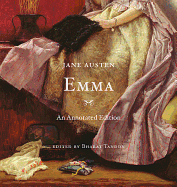
| Publisher: | Belknap | |
| Genre: | General, Fiction | |
| ISBN: | 9780674048843 | |
| Pub Date: | September 2012 | |
| Price: | $35 |
| Fiction |
by Jane Austen; Bharat Tandon, editor
Many Jane Austen fans have a particular favorite among her titles. Those who claim Emma as their preferred work--oh, the clever matchmaking premise, the accomplished narrative, the bright wit!--can further their adulation with this edition annotated by Bharat Tandon (Jane Austen and the Morality of Conversation).
In his introduction, Tandon notes that he wants "only to shed enough light on Austen's details to enable individual readers to make their own informed decisions regarding exactly how the details connect with those contexts that time has rendered less manifest." And so he does. His notes include definitions, historical information and commentary; all are highly readable and always elucidating. He also purposefully avoids over-interpretation of Austen's text, allowing the reader to experience the joy of the original work while benefiting from his insight. The extensive annotations are accompanied by a lavish collection of illustrations, many in color, that serve to better define the novel's setting.
For die-hard fans of Emma, this annotated edition is a must-have. For readers new to Jane Austen's work, it's the perfect way to start what might likely turn out to be a lifelong love affair with her work. --Roni K. Devlin, owner, Literary Life Bookstore
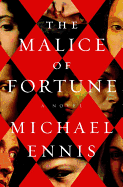
| Publisher: | Doubleday | |
| Genre: | General, Fiction, Mystery & Detective, Thrillers, Historical | |
| ISBN: | 9780385536318 | |
| Pub Date: | September 2012 | |
| Price: | $26.95 |
| Fiction |
by Michael Ennis
Stieg Larsson and CSI meet Renaissance Italy in Michael Ennis's ambitious The Malice of Fortune, in which Leonardo Da Vinci and Niccolo Machiavelli team up to investigate a series of grisly murders. All the victims are women; all are horribly mutilated. Anyone might be the next victim, including the beautiful golden-haired courtesan Damiata, with whom Machiavelli has fallen in love--and who guards a secret or two of her own.
The fictitious story in The Malice of Fortune occurs within a framework of documented historical events involving Duke Valentino--better known as the notorious Cesare Borgia, eldest son of Pope Alexander VI--and the brigand leaders who propose to help him conquer Italy. A treaty between Valentino and these leaders would mean certain doom for Florence, and that is how Machiavelli enters the story--as a low-level emissary sent by the council of Florence to stall negotiations as much as he can.
Damiata acts out of desperation to save her son from the clutches of Pope Alexander VI. Her child's father, the Pope's younger son, Juan Borgia, was brutally murdered by an unknown assailant--and Damiata is a suspect. Until she can prove her innocence, her son is held hostage in the Vatican. As the corpses pile up, a complex pattern takes shape--a message from the murderer so deviously encoded that Da Vinci, recently retained as Cesare's chief architect, must turn the full weight of his intellect to solving it.
The Malice of Fortune contains innumerable twists that culminate in a memorable, suspenseful conclusion. --Ilana Teitelbaum, book reviewer at the Huffington Post
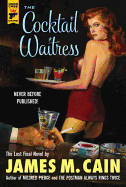
| Publisher: | Hard Case Crime | |
| Genre: | General, Fiction, Romance, Mystery & Detective, Hard-Boiled | |
| ISBN: | 9781781160329 | |
| Pub Date: | September 2012 | |
| Price: | $23.99 |
| Mystery & Thriller |
by James M. Cain
Attention, James M. Cain fans: if you've been desperate for another shot of Cain's noir, you can quench your thirst with The Cocktail Waitress. It took Hard Case Crime editor Charles Ardai nine years to track down this unfinished manuscript from Cain's final years, and he's done a superb job of bringing the dark and gritty story back to fully hardboiled life.
Meet beautiful Joan Medford of Hyattsville, Md., (where Cain lived in his final years). She's telling her story into a tape recorder and recounting it all, "including some things no woman would willingly tell." Her husband, a brute, has just died in a car accident (Double Indemnity redux?). The young woman is broke, and her three-year-old son, Tad, is being taken care of by her unruly sister-in-law. Fortunately, with a little help from those gorgeous gams and the way she fills out a flimsy peasant blouse without a bra, she secures a job as a cocktail waitress. Two regular customers vie for her attention: a handsome young stud named Tom and the elderly Earl K. White III, a wealthy, drab financier and widower. In pure Cain style, things get messy--and deadly.
What will Joan do--or, better yet, not do--to get her son back? The ending is vintage Cain. The Cocktail Waitress is a not-to-be missed crime thriller for all Cain fans. --Tom Lavoie, former publisher

| Publisher: | Harper | |
| Genre: | General, Crime, Fiction, Mystery & Detective, Historical, African American, Women Sleuths | |
| ISBN: | 9780061802058 | |
| Pub Date: | September 2012 | |
| Price: | $25.99 |
| Mystery & Thriller |
by Attica Locke
Attica Locke's debut novel, Black Water Rising, garnered prize nominations and a devoted readership. The Cutting Season is just as good. It's set in Louisiana on Belle Vie, a former plantation--now hosting weddings and historical reenactments--that has been anything but a "beautiful life" for many of its inhabitants over the centuries, from slaves and freed blacks to the white family that owns it today.
Caren Gray, the manager of Belle Vie, has connections with the plantation through her slave and freed ancestors. One day, a young Mexican woman working nearby is found with her throat cut. There is no shortage of suspects. As Caren works to remove suspicion from one of the young men working for her, she uncovers evidence that Jason, one of her ancestors who disappeared many years ago, also was murdered. Caren's nine-year-old daughter, Morgan, is also involved, in ways that are slowly and surprisingly revealed. Morgan's father, Eric, arrives when it appears that Morgan might be in danger, and matters quickly become awkward as old feelings resurface. The intertwined murders keep the reader mesmerized and rooting for Caren as she tries to fit the pieces together and understand how this recent murder and that of Jason are connected.
Past, present and an uncertain future must be reconciled. Locke brings it all together by story's end, but not before Caren has come to terms with her own past, her paternity, her love for Eric and her protection of her daughter and her staff--and is ready to move ahead. --Valerie Ryan, Cannon Beach Book Company, Ore.

| Publisher: | Stewart, Tabori & Chang | |
| Genre: | General, Biography & Autobiography, Crafts & Hobbies | |
| ISBN: | 9781584799962 | |
| Pub Date: | September 2012 | |
| Price: | $40 |
| Biography & Memoir |
by Kaffe Fassett
Renowned artist and designer Kaffee Fassett connects with readers in Dreaming in Color. Through storytelling about images of his early paintings, illustrations, hand-knitting, fabric design, quilts, needlework and so much more, he re-creates his bohemian childhood in Big Sur, Calif., his world travels and his forays into every kind of creative design.
His parents bought a cabin from Orson Welles in the 1930s and transformed it into the world-famous Nepenthe restaurant. Kaffe and his siblings lived outdoors as much as inside; his childhood was not one of cosseted overprotection. He was allowed to roam the acreage, encouraged to help the workmen and learned to work with his hands as an artist, an artisan and a craftsman.
He attended a boarding school run by disciples of Krishmamurti, studied painting at the School of the Museum of Fine Arts in Boston and then traveled to England. From this eclectic background came his fascination with design, whether in needlepoint or mosaic, tapestry or rugmaking, costume and set design or quilting. His journeys around the world inspired him to create different patterns, to use dyes and colors in unusual ways. He is the first living textile designer to have a one-person show at the Victoria and Albert Museum in London.
Dreaming in Color, illustrated with 500 color pictures, is a feast for the eyes. The text, filling in the story of his life, is straightforward, with a conversational tone, giving credit to those people and events that inspired him--but always, first and foremost, filled with the color and drama that are Kaffe Fassett. --Valerie Ryan, Cannon Beach Book Company, Ore.

| Publisher: | Crown | |
| Genre: | General, Western Europe, Biography & Autobiography, History | |
| ISBN: | 9780307382467 | |
| Pub Date: | September 2012 | |
| Price: | $27 |
| Biography & Memoir |
by Tom Reiss
General Thomas-Alexandre Dumas, father of the famous French writer Alexandre Dumas, lived a life that sounds like fiction: the son of a white aristocrat and freed slave, he was sold into slavery by his father before being repurchased and freed in France to live the life of an aristocrat's son. From there, he joined the French Army, where his physical stature and military prowess launched him through the ranks under Napoleon--until he was captured and held prisoner in Sicily for more than two years.
The Black Count recounts the life--and legacy--of this great man in extensive detail. Tom Reiss (The Orientalist) draws on over six years of primary research to tell Dumas's story. But the book is much more than a biography of a great French general. It's also a history of civil rights in France, an account of the French Revolution and a tale of Napoleon's rise to power. Woven throughout all of this historical detail is an ongoing analysis of Dumas's influence on his son's famous novels, particularly The Three Musketeers and The Count of Monte Cristo. Though General Dumas is not commemorated with any statue in France today, he remains an important figure in French history and in literature; The Black Count merges the myth of the man contained in his son's novels with the facts of his life, resulting in an impeccable history that reads like a novel but packs the facts of a textbook. --Kerry McHugh, blogger at Entomology of a Bookworm
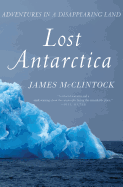
| Publisher: | Palgrave MacMillan | |
| Genre: | General, Ecosystems & Habitats, Earth Sciences, Environmental Conservation & Protection, Environmental Science, Science, Nature | |
| ISBN: | 9780230112452 | |
| Pub Date: | September 2012 | |
| Price: | $26 |
| Starred | Nature & Environment |
by James McClintock
Zoologist James McClintock has spent his career in the Antarctic, lovingly examining and meticulously documenting the wildlife, from the leopard seals and emperor penguins to the tiny sea butterflies and plankton, while recording changes in ocean conditions. Lost Antarctica collects a selection of his experiences: deep-sea diving, storms at sea, sightings of creatures large and small and other discoveries of tiny, crucial instances of evolutionary genius. Although he takes his time getting there, McClintock's most important point is cautionary: Antarctica, he says, is an early warning for the rest of our world.
McClintock has observed climate change firsthand and can lend his firsthand knowledge to other studies that document and explain the crisis. He also addresses "the other CO2 problem"--the increasing levels of carbon dioxide in our oceans that lower the water's pH levels. The combination of ocean acidification, rising temperatures and melting ice threatens many species and their delicate relationships with one another--and the consequences extend even further, as some organisms that live only in Antarctica have been shown to yield chemicals that can help fight cancer and influenza.
While Lost Antarctica is an alert about climate change and ocean acidification, it ends on a surprisingly hopeful note. McClintock's message is reasoned and well documented--and his descriptions of a wondrous world of coral, starfish, sea sponges, fish, crabs, penguins and birds of prey make this important scientific message accessible to the general reader. --Julia Jenkins, librarian and blogger at Pages of Julia
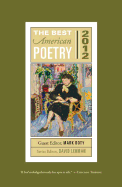
| Publisher: | Scribner | |
| Genre: | Literary Criticism, General, American, Poetry, Anthologies (multiple authors) | |
| ISBN: | 9781439181522 | |
| Pub Date: | September 2012 | |
| Price: | $16 |
| Poetry |
by Mark Doty
Frost said a good poem "begins in delight and ends in wisdom," and the same can be said of a good poetry collection. The Best American Poetry 2012 fills that objective thanks to the inspired selections of guest editor Mark Doty. " 'Best' is problematic," he admits in his introduction. "This book might well be called Seventy-Five Poems Mark Likes."
Doty's anthology begins with a delightful first line from Sherman Alexie: "The music of my youth was much better/ Than the music of yours. So was the weather" and ends with Kevin Young's revelation about his pregnant wife's sonogram: "And there/ it is: faint, an echo, faster and further/ away than mother's, all beat box/ and fuzzy feedback. You are like hearing/ hip-hop for the first time--power / hijacked from a lamppost--all promise." In between, Doty shares works from familiar poets like Mark Strand and Frederick Seidel as well as relative newcomers like Erica Dawson and Michael Morse. The best selection may be Spencer Reece's long "The Road to Emmaus," a dramatic narrative in the styles of E.A. Robinson and T.S. Eliot paying tribute to the narrator's AA sponsor "caged in his worries of doctor bills, no money,/ and running out of people to ask for it: / mulling over mistakes, broken love affairs." Overall, Doty's bias toward "a certain disciplined richness of language, a considered relation between restraint and gorgeousness," yields one of the strongest collections in this estimable series' 25-year history. --Bruce Jacobs, founding partner, Watermark Books & Cafe, Wichita, Kan.

| Publisher: | Roaring Brook Press | |
| Genre: | Friendship, Concepts, Animals, Social Issues, Seasons, Juvenile Fiction, Bears | |
| ISBN: | 9781596437456 | |
| Pub Date: | September 2012 | |
| Price: | $16.99 |
| Starred | Children's & Young Adult |
by Philip Christian Stead, illust. by Erin E. Stead
The Caldecott Medal–winning creators of A Sick Day for Amos McGee present another inspiring tale of friendship and collaboration.
"It was almost winter and Bear was getting sleepy." Against a spare white background where birch tree trunks and golden-leaved maples stretch off the top of the page, the ursine hero walks with a mission: "Bear had a story to tell." One by one, the fellow asks his friends if they want to hear his tale. "I am sorry, Bear," says Mouse, "but it is almost winter and I have many seeds to gather." Bear helps Mouse gather seeds. He helps Duck find a Southerly wind, and digs a "frog-size hole" in which to tuck Frog safely for the winter. As Bear calls down Mole's hole, readers must turn the book to appreciate the depths of Mole's tunneling. At the bottom, Mole is already asleep. Erin Stead renders the first snowfall as a vision in cornflower blue and violet with white (and a few yellow) circles dotting the sky. Bear's skyward look of wonder mirrors our own, and on the next page Bear himself is sound asleep.
With the first signs of spring, Bear rolls in the sunshine under a sky of teal green. As he welcomes his friends back, he gives each a gift. And they, in turn, give Bear a gift. Erin Stead's visual clues to the cycles of the seasons echo Philip Stead's lilting circular construction of the narrative. Together they celebrate the ebb and flow of friendship, and its endless gifts. --Jennifer M. Brown, children's editor, Shelf Awareness

| Publisher: | Holiday House | |
| Genre: | Science Fiction, Action & Adventure, Juvenile Fiction, Survival Stories, Dystopian | |
| ISBN: | 9780823424146 | |
| Pub Date: | July 2012 | |
| Price: | $16.95 |
| Children's & Young Adult |
by Saci Lloyd
In Saci Lloyd's (The Carbon Diaries) new dystopian action-packed thrill ride, England is in trouble. Oil is scarce, and countries that rely on it are falling far behind the "wave and wind" nations. Even London's Outsiders, rebels who choose to live off the grid, have been more successful at making their own energy than the British government.
Uma is an Outsider who finds herself with the key to a revolution in her hands. She must deliver a disc to the next Keeper, who will help lead the Outsiders in their quest for a better life. Hunter is a privileged Citizen, whose father holds an important official job troubleshooting one energy crisis after another. But Hunter is fascinated by the way Outsiders live. It's real, and when he's not plugged into his retinal scan like the rest of the Citizens, playing online games "like a braindead dingus," he can see "London as it really is." The two are thrown together when Hunter witnesses the killing of a defenseless Outsider by brutal Kossak soldiers, and they team up to figure out how they can deliver the disc and save the Outsider movement. On the run now, they draw their friends and family into danger along with them, with the Kossaks hot on the trail, determined to stop them with whatever force is necessary.
Momentum features strong characters in a high-tech, desperate world. Even in a crowded field of dystopian post-oil stories, this one will stand out for its taut energy and well-plotted suspense. --Lynn Becker, host of Book Talk, the monthly online discussion of children's books for SCBWI
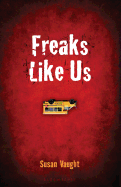
| Publisher: | Bloomsbury | |
| Genre: | Depression & Mental Illness, Mysteries, Espionage, & Detective Stories, Social Issues, Juvenile Fiction | |
| ISBN: | 9781599908724 | |
| Pub Date: | September 2012 | |
| Price: | $16.99 |
| Children's & Young Adult |
by Susan Vaught
Vaught (Going Underground) mixes mystery, friendship and an unusual narrative voice in her latest novel.
Self-proclaimed "Alphabets" because of the mental disabilities each of them possesses (ADHD, BPD), Jason, Sunshine and Derrick have been friends since Kindergarten and ride the "short bus" together. When Sunshine, a selective mute, never makes it home from the bus stop, Jason (aka "Freak") tries to solve the mystery, even as he's being questioned as a suspect. His schizophrenia causes him to lose touch with reality, and that complicates things. Jason describes it this way: "I talk great in my head, but I suck out loud, and sometimes because there's so much racket, I'm not good at staying on track or explaining what I see...." Unsure of what is a real memory and exactly what happened the day Sunshine went missing, Freak's inner monologue conveys his struggle as time ticks down and Sunshine gets farther from being found.
Vaught's ability to capture the voice of a teenager in such complicated circumstances--suffering from schizophrenia, missing a friend, solving a mystery, a suspect himself--feels authentic and compelling. What could have easily been a book just about schizophrenia has been expertly crafted into a story about a missing girl, the relationships among the Alphabets, and their connections to their friends and family. While readers may initially find it challenging to settle in with a narrator whose mind works so differently from their own, Freak's completely genuine voice and loyal actions will win them over. --Shanyn Day, blogger at Chick Loves Lit